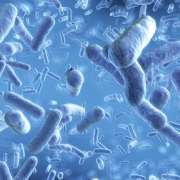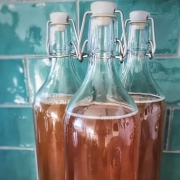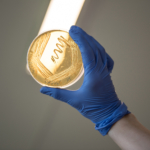Creating a scientific definition of ‘fermented foods’
By Prof. Maria Marco, Department of Food Science and Technology, University of California Davis, USA
A panel of scientific experts was recently convened by ISAPP to discuss the state of knowledge on fermented foods. While there was much agreement on the underlying microbiological processes and health-related properties of those foods and beverages, our conversation on definitions led to sustained debate. So what exactly is a fermented food?
The word “ferment” originates from fervere, which in Latin means to boil. According to the Merriam-Webster dictionary, the verb ferment is defined as “to undergo fermentation or to be in a state of agitation or intense activity”. Fermentation is defined as both a chemical change with effervescence and as an enzymatically controlled anaerobic breakdown of energy-rich compounds (such as a carbohydrate to carbon dioxide and alcohol or to an organic acid). In biochemistry, fermentation is understood as an ATP-generating process in which organic compounds act as both electron donors and acceptors. In industry, fermentation means the intentional use of bacteria and eukaryotic cells to make useful products such as drugs or antibiotics. As you can see, there are clearly many meanings implied in “ferment” and “fermentation”. We add onto this by defining how those words apply to foods.
As our ISAPP panel began to deliberate the definition of fermented foods, it quickly became clear how difficult reaching consensus can be! Even though many panel members shared similar academic backgrounds and scientific expertise, finding agreement on the definition required several rounds of debate and some consuming of fermented foods and beverages along the way. Finally, we defined fermented foods and beverages as being “foods made through desired microbial growth and enzymatic conversions of food components” (see the published consensus paper here).
Find ISAPP’s infographic on fermented foods here.
This definition is very specific by requiring microbial growth and enzymatic processes for the making of those foods. Activity of the endogenous enzymes from the food components or enzymes added to the food is not enough for a food to be regarded as fermented. Similarly, foods made by only adding vinegar or “pickling” should not be called fermented. The definition acknowledges the essential roles of microorganisms for making fermented foods but does not require their presence or viability at the time of consumption.
On the other hand, our definition does not restrict fermented foods to only those foods and beverages made using microorganisms using metabolic pathways implicit in the strict biochemical definition. Yogurt and kimchi made using lactic acid bacteria relying on fermentative energy metabolism are included as much as koji and vinegar, foods made using fermentation processes that employ fungi and bacteria that perform aerobic respiratory metabolism.
Each word in a definition needs to be carefully calibrated. The best example of this in our definition of fermented foods is the word “desired”. Unlike a food that is spoiled as a result of microbial growth and enzymatic activity, food fermentations generate wanted attributes. Other words such as “intentional”, “desirable”, or “controlled” may also be used to describe this meaning. However, those words also have caveats that not all fermented foods are made “intentionally”, at least in the way that they were first prepared thousands of years ago. Qualities of fermented foods may be “desirable’ in some cultures but not others. While some fermentations are “controlled”, others are spontaneous, requiring little human input.
The process of discussing the definition with a group of scientific experts was enlightening because it required us to deconstruct our individual assumptions of the term in order to reach agreement on descriptions and meaning. With a definition in hand, we can use a shared language to study fermented foods and to communicate on the significance of these foods and beverages in our diets. There will also certainly be more “fermenting” of these concepts to improve our knowledge on the production and health impacting properties of fermented foods for years to come.
Find the ISAPP press release on this paper here.
Read about another ISAPP-led publication on fermented foods here.
Learn more in a webinar on the science of fermented foods here.















